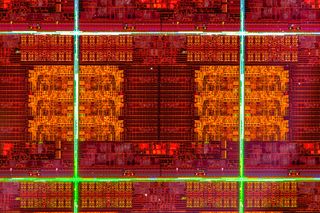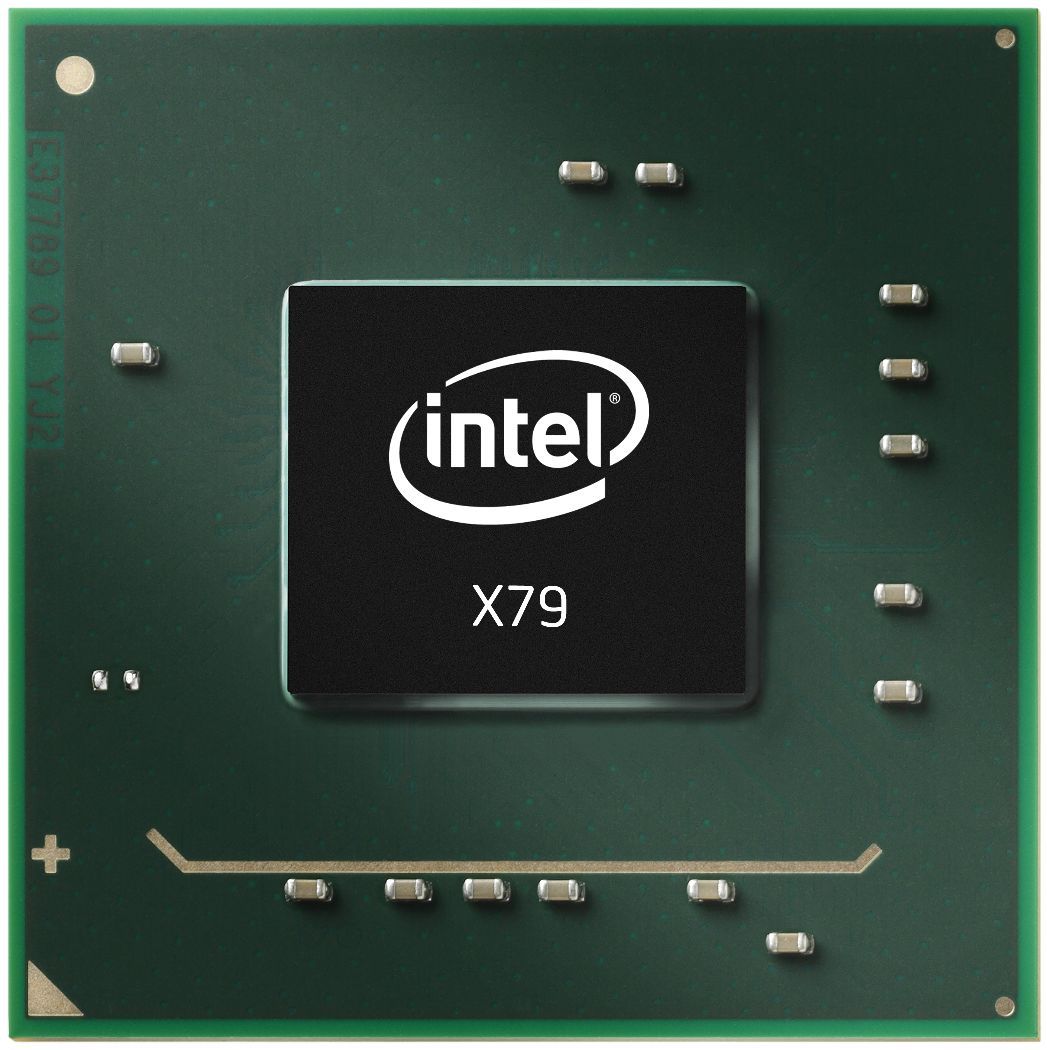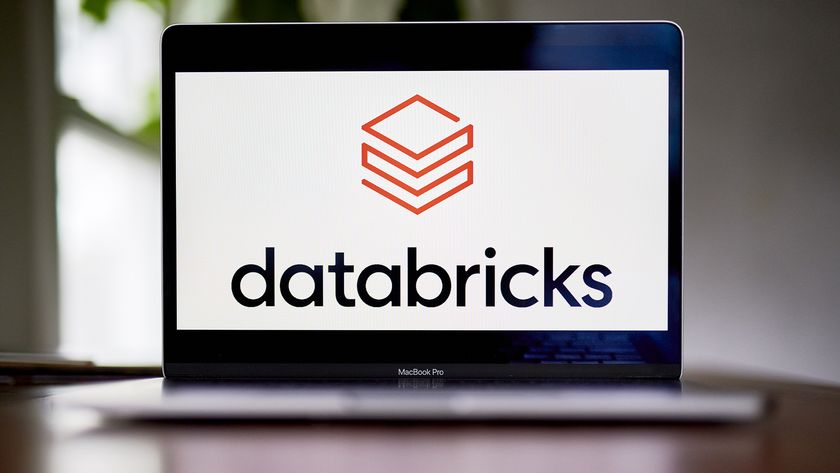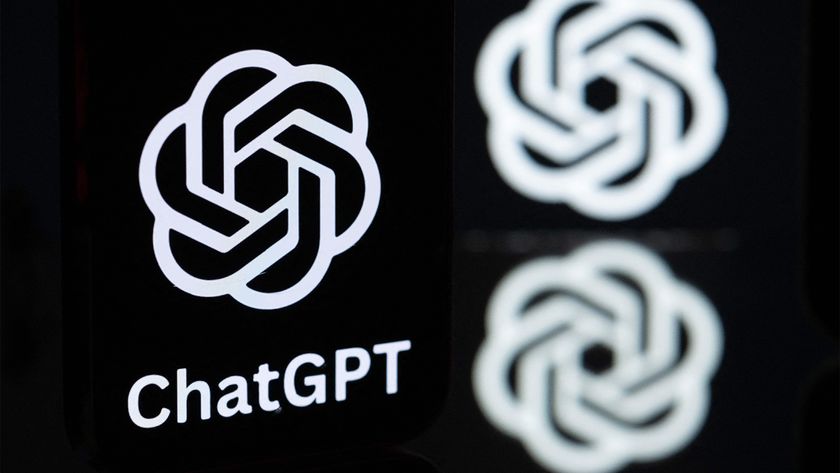Performance
Our test rig consisted of an Asus X79-Deluxe motherboard, 32GB of Corsair Vengeance Pro DDR3 memory, a Samsung 840 EVO SSD, and a Corsair H100i water-cooling unit. We used an AMD Radeon HD 7730 graphics card the i7-4960X doesn't have integrated graphics, and this card's performance isn't too far removed from the pace seen in top integrated cores, such as Haswell's HD Graphics 4600.
The i7-4960X romped through our application benchmarks to an overall score of 1.3 the best we've ever seen. It's far ahead of Haswell's 1.17, and a slight improvement over the i7-3960X, which scored 1.27.

Delving deeper into the results illustrates Ivy Bridge-E's talents. The i7-4960X scored 1.98 in the video rendering benchmark, which easily beats the i7-3960X's 1.74, and the older chip's 3D rendering result of 1.54 improved to 1.68 thanks to Ivy Bridge-E. The new part scored 1.15 in the multi-tasking test an improvement on Sandy Bridge-E's 1.1.
The i7-4960X didn't always dominate. The new chip was marginally slower when encoding audio files and working with photographs: the older i7-3960X chip scored 1.25 and 1.11 in our iTunes and Photoshop tests, and the Ivy Bridge-E chip only managed 1.17 and 1.08.
Ivy Bridge-E trades blows with its predecessor, but it also fell behind Haswell in some of our tests. The i7-4960X scored 1.07 in our Responsiveness benchmark but the i7-4770K, with its four Haswell cores, scored 1.09. It's not enough to make a difference to daily usage, but it's worth bearing in mind if you're considering which chip to buy.
Other benchmarks illustrate the multi-threaded power of the i7-4960X. Cinebench's video rendering benchmark uses every core, and in this test the i7-4960X scored 11.85. The i7-3960X scored 11.01 and the i7-4770K could only manage 8.12. In the wPrime benchmark, which uses every core to calculate prime numbers, the i7-4960X led the way: it completed the app's 1,024MB test in 132s, while the i7-3960X needed 151s to finish the same run.
The move to 22nm keeps temperatures down and power draw consistent with Sandy Bridge-E. Our processor hit a fine peak temperature of 63C, and the i7-4960X drew 247W during the Cinebench test only 4W more than the i7-3960X, despite the huge boost to performance.
Fit for business?
If you need a high-end PC for business, should you choose Xeon instead of Ivy Bridge-E? They're certainly comparable when it comes to price: a Dell Precision T7600 workstation with a Xeon E5-2620, which is based on Sandy Bridge-E and will soon be updated to a comparable Ivy Bridge-E chip, costs 1,822 inc VAT a similarly-specified system with the i7-4960X 847 inside will cost similar money.
You also get different features with these two types of chip. Ivy Bridge-E has Turbo Boost 2.0, which improves each chip's dynamic overclocking ability, but Xeons have more business features: Trusted Execution Technology with TPM integration, compatibility with ECC memory, and both Resilient System and Memory Technology, which safeguard systems from errors.
There's a bigger issue at play, though: whether you need Ivy Bridge-E's power at all. Its six-core architecture excels at intensive, multi-threaded applications, but in standard computing tasks it's no quicker than the Haswell-based Core i7-4770K. That processor costs 270, rather than the 847 you'll need to fork out for the i7-4960X, and it also works with a more versatile chipset that's available on a broader range of cheaper motherboards.
We can only recommend the i7-4960X if you need the additional power afforded by having a six-core chip, quad-channel memory banks and a huge number of PCI-Express 3.0 lanes. For everyone else, save some money and buy Haswell instead.
Verdict
The Ivy Bridge-E based i7-4960X is superb in multi-threaded, high-end applications thanks to six Hyper-Threaded cores, but it’s no quicker than cheaper chips in single-threaded tasks. It's high price and ageing ancillary hardware mean that this is only recommended for those who have deep pockets and will make use of the chip’s unique talents.
Clock speed: 3.6GHz stock, 4GHz Turbo Manufacturing process: 22nm Architecture: Ivy Bridge-E Core: Six, Hyper-Threaded Cache: 32KB L1 per core, 256KB L2 per core, 15MB L3 Memory: Quad-channel, 1,866MHz, DDR3 Socket: LGA 2011
Mike Jennings has worked as a technology journalist for more than a decade and has been fascinated by computers since childhood, when he spent far too long building terrible websites. He loves desktop PCs, components, laptops and anything to do with the latest hardware.
Mike worked as a staff writer at PC Pro magazine in London for seven years, and during that time wrote for a variety of other tech titles, including Custom PC, Micro Mart and Computer Shopper. Since 2013, he’s been a freelance tech writer, and writes regularly for titles like Wired, TechRadar, Stuff, TechSpot, IT Pro, TrustedReviews and TechAdvisor. He still loves tech and covers everything from the latest business hardware and software to high-end gaming gear, and you’ll find him on plenty of sites writing reviews, features and guides on a vast range of topics.
You can email Mike at mike@mike-jennings.net, or find him on Twitter at @mikejjennings














